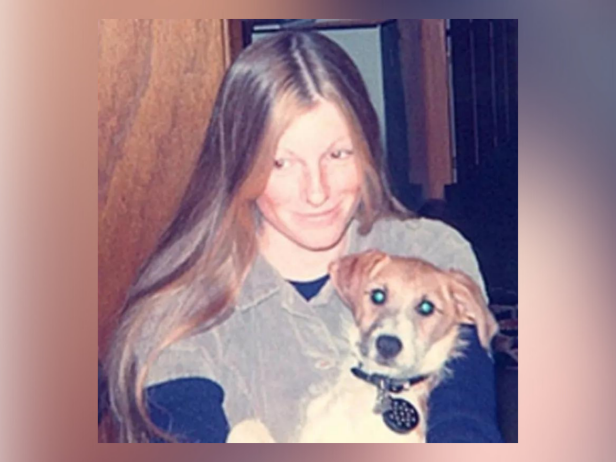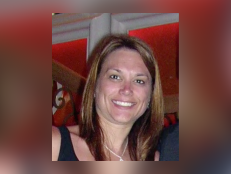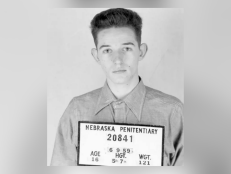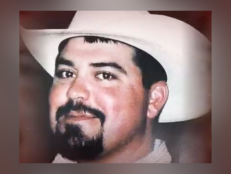What To Know About The Unsolved Murder Of Beverly Lynn Smith
Canadian police believed they were zeroing in on the man who had killed a 22-year-old mother but their controversial investigation yielded nothing more than a false confession and unanswered questions.

Durham Regional Police Department

In 1974, 22-year-old Beverly Lynn Smith was found shot dead in her kitchen while her 10-month-old baby slept unharmed in the next room. An upcoming Amazon docuseries dives into the murder and the botched investigation that came 30 years after the crime. Here are five things to know about the still-unsolved murder.
Beverly’s husband, Doug Smith, was selling marijuana at the time of the murder
According to Toronto Life, Doug sold small amounts of marijuana around town when he wasn’t working at his job at the General Motors assembly plant in Oshawa, Ontario. He was at work on December 9, 1974, when he called to check in on Beverly, and their infant daughter, Rebecca. When Beverly didn’t answer the phone, Doug called one of his customers who lived in the neighborhood to check on his family. The neighbor peeked through a window and saw Beverly lying on the kitchen floor. Later, investigators would realize the only thing missing from the home was six ounces of Doug’s marijuana.
Beverly’s murder was the first homicide investigated by a new police department
The Regional Municipality of Durham was established on January 1, 1974, as a new regional government structure in Ontario. Regional governments in Canada are comparable to American county governmental bodies. The new municipality was building its police force, and they hadn’t had a homicide since its formation. According to Toronto Life, the responding officers had been drinking alcohol at a Christmas party when they were summoned to the Smith home. The alleged inebriation led to missing interviews, bad police work, and crime scene contamination.
Authorities theorized the crime was a drug deal gone bad
There was no evidence of forced entry, nor was anything missing from the home, according to reports. Rebecca was unharmed in the next room while Beverly lay dead on the floor of a 22-caliber shotgun blast to the back of the head. Police reportedly believed that Beverly had let a marijuana buyer into the home and was shot when she returned from getting it from upstairs. The case quickly grew cold.
Police were revisiting an old connection when they zeroed in on a neighbor
It was Alan and Linda Smith (no relation) whom Doug called from work to check on his wife and child that night in 1974. In 2007, an interview with an old friend of Alan’s led police to interview Linda, though the couple was long since divorced. Linda’s story about the night of the murder had changed somewhat, and she told authorities that Alan had actually been out of the house for about an hour the night Beverly was found dead.
Authorities plotted an elaborate Mr. Big sting in an attempt to get Alan to confess to Beverly’s murder
Mr. Big stings are a controversial police tactic where undercover officers develop an entire fake criminal enterprise and draw the target into the scheme by befriending him or her and slowly involving them in escalating fake crimes. As the target gets more enmeshed with the fake criminal activity, they are eventually taken to see another undercover officer who is posing as a high-ranking gang member or drug kingpin — the “Mr. Big.” At that point, the undercover officers attempt to get the target to confess to a prior crime in order to gain credibility within the fake criminal organization.
In Alan’s case, an undercover officer inserted himself into Alan’s life in 2009 as a fishing buddy who introduced him to an elaborate marijuana operation. Alan, who later said he was afraid he would be killed by the fictitious Mr. Big, confessed to killing Beverly, though he got several of the key details wrong.
Ultimately, Alan was arrested and charged with Beverly’s murder and went to trial in 2014, but a judge ruled that the confessions elicited during the Mr. Big sting were coerced and inadmissible in court. Around the same time, a Canadian Supreme Court decision in another case ruled that Mr. Big stings were likely to elicit a false confession. With the confessions thrown out and no evidence linking Alan to the crime, he was acquitted. The case remains unsolved to this day.


![Timothy W. Bliefnick [inset] fatally shot Rebecca Bliefnick [main] on Feb. 23, 2023 while the couple was in the process of getting a divorce.](http://investigationdiscovery.sndimg.com/content/dam/images/investigationdiscovery/crimefeed/legacy/2023/03/facebook-rebecca-bliefnick-adams-county-sheriffs-office-tim-bliefnick-31623.png.rend.hgtvcom.231.174.suffix/1678996818449.png)




![Randon Lee, 18, [left] and his mother Ophelia Nichols [right], seen here smiling for a photo.](http://investigationdiscovery.sndimg.com/content/dam/images/investigationdiscovery/crimefeed/legacy/2022/06/ophelia-nichols-facebook-randon-lee-ophelia-nichols-06292022.png.rend.hgtvcom.231.174.suffix/1656527297024.png)

